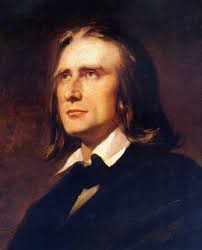The History of “Mazeppa” by Franz Liszt
Franz Liszt, one of the most influential figures of the Romantic era, was a composer who constantly pushed the boundaries of piano music. Among his many virtuosic and programmatic works, Mazeppa stands out as one of the most dramatic and technically demanding compositions in his catalog. Inspired by the legendary tale of Ivan Mazeppa, Liszt transformed a vivid narrative into a powerful musical experience that continues to challenge and inspire pianists today.
The Legend Behind “Mazeppa”
The composition is based on the legend of Ivan Mazeppa, a Ukrainian nobleman who, after being caught in an affair with a Polish noblewoman, was punished by being tied naked to a wild horse and set loose. The story, immortalized by Lord Byron in his 1819 narrative poem Mazeppa, captured the imagination of many Romantic artists and composers. In Byron’s telling, Mazeppa endures great suffering during the wild ride but eventually emerges as a strong and heroic figure—a symbol of resilience, transformation, and destiny.
Liszt’s Fascination with Mazeppa
Liszt encountered Byron’s poem during his travels and quickly recognized its dramatic potential for musical treatment. He was not alone in this interest—several composers, including Tchaikovsky and Rachmaninoff, also created works inspired by the Mazeppa legend. However, Liszt’s interpretation is particularly vivid and personal, reflecting his own artistic ideals and his fascination with heroism and suffering.
Liszt first tackled the Mazeppa story in an orchestral tone poem (Symphonic Poem No. 6), but it was his solo piano work that gained the most fame. This piece is part of his Transcendental Études, a set of twelve highly challenging piano studies. The fourth étude, titled Mazeppa, was composed in its final form in 1851, though Liszt had begun working on earlier versions as far back as the 1830s.
The Music: A Wild Ride in Sound
Mazeppa, the fourth of the Transcendental Études, is a sonic depiction of the horse’s frenzied gallop and Mazeppa’s perilous journey across the vast steppes. From the explosive opening, the music surges forward with relentless energy. Galloping rhythms, thunderous octaves, and sweeping arpeggios evoke the image of the rider strapped to the wild horse.
Liszt’s use of thematic transformation—a technique where a theme is altered and developed throughout the piece—allows the music to follow the narrative arc. The tumultuous middle section gives way to a triumphant conclusion, mirroring Mazeppa’s rise from suffering to glory. The closing measures, marked “Il tombe, mais se relève… il devient roi” (“He falls, but rises again… he becomes king”), affirm the hero’s victorious transformation.
A Pinnacle of Virtuosity
Liszt’s Mazeppa is infamous for its difficulty. The demands it places on the pianist are immense, requiring extraordinary stamina, precision, and dramatic flair. It is one of the definitive showpieces of the Romantic piano repertoire and serves as a rite of passage for many concert pianists.
Yet beyond its technical fireworks, Mazeppa is a deeply expressive work. It encapsulates Romantic ideals of struggle, heroism, and the power of the human spirit to transcend suffering. In this way, Liszt’s music is not just a dazzling display of virtuosity, but also a profound artistic statement.
Legacy and Influence
Mazeppa remains one of Franz Liszt’s most enduring and frequently performed piano works. It continues to captivate audiences with its visceral energy and emotional depth. Pianists who perform it not only showcase their technical prowess but also engage with a rich tradition of storytelling through music.
Liszt’s Mazeppa exemplifies the fusion of literature and music, of narrative and expression. It is a brilliant testament to Liszt’s genius as a composer, interpreter, and visionary—a man who, like Mazeppa himself, defied the odds and emerged as a legendary figure.


Comments are closed